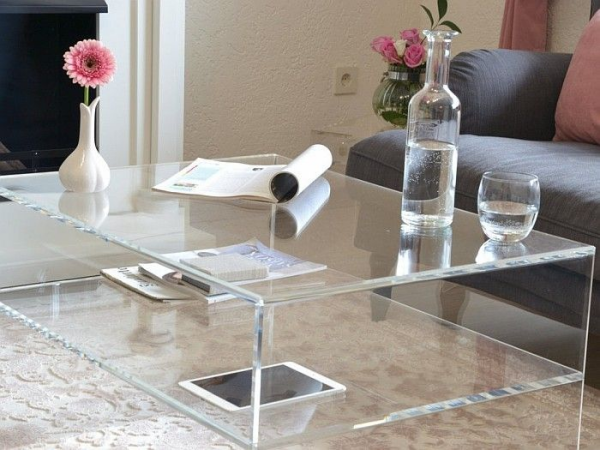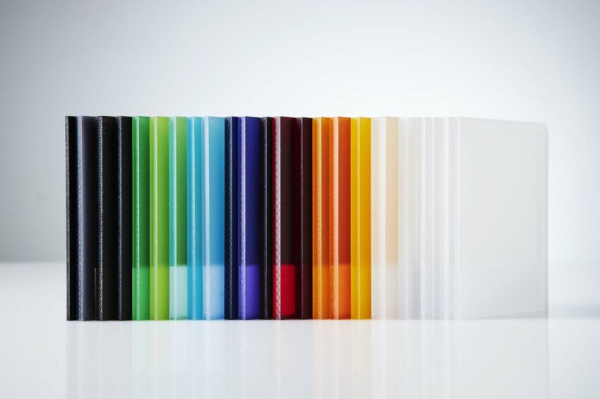Acrylic glass – small guide about its properties, advantages and areas of application
Modern science and new technologies today provide us with many innovative products that are much better than conventional materials and that are widely used in numerous areas of our everyday life. For example, real glass is increasingly being replaced by acrylic glass. This plastic glass has an irresistible quality and can be purchased at an unbeatable price. In the following we want to explain the properties of acrylic glass and where it is often used. We also list the main advantages and disadvantages of plastic glass so that you can make an informed decision before making a purchase.
Acrylic glass is transparent like glass, but 30 times stronger.

What is acrylic glass?
Acrylic glass is also known as plexiglass and acrylate. The exact chemical name for this is polymethyl methacrylate, also known as PMMA for short. This is a popular art glass and has established itself as an excellent replacement for real glass. It is made of transparent plastic and mainly offered in sheet form. The acrylic sheets have different thicknesses, thicknesses and surface coatings and can be transparent, matt, tinted in color or milky. You can also get fluorescent and mirrored acrylic sheets from leading suppliers. If you are interested in this and want to buy acrylic glass, you can find a wide range of synthetic glass sheets online or have them cut to your own dimensions, free of charge!
The acrylic sheets are translucent and break-proof, simply perfect for a greenhouse or winter garden.

What is special about acrylic glass and where is it used?
Depending on the manufacturing method, a distinction is made between cast (GS) and extruded (XT) acrylic sheets. The GS acrylic glass is poured onto a plate, is weather-resistant and can be easily processed. It is easy to saw, drill, even mill and bend without breaking. This also determines its wide area of application. The extruded acrylic sheets are rolled thin during manufacture. So you get bigger records and they are offered at a very affordable price. However, the XT acrylic sheets must not be sawed, drilled or milled because they can easily break. This somewhat limits their uses.
First you have to make the difference between GS and XT acrylic glass.

Art glass is a popular material for passionate hobbyists. They appreciate it as an alternative to real glass. At home you can use it to redesign the kitchen rear wall or give the bathroom an elegant touch. The art glass comes into its own as a transparent partition in the office or home office. You can make a patio roof out of acrylate, build a greenhouse yourself or treat yourself to a beautiful winter garden.
But it can also be used in various sectors, including industry and medicine. Advertising and company signs are made from this synthetic glass. Acrylic glass is also an important aid in medicine and dentistry, because it is used to make prostheses, contact lenses and glasses. Not to mention its use in the household. In every kitchen there are bowls made of synthetic glass, in every home there are elegant picture frames made of the transparent material and much more.
With acrylic sheets you give your bathroom a modern look.

The advantages and disadvantages of acrylic glass at a glance
When doing DIY at home or in the garden or when realizing larger DIY projects, you must first be clear about the type of acrylic glass you need for your project. Here we list the most important characteristics of synthetic glass so that you can get a better overview. We also emphasize the differences between artificial glass and normal glass.
- Break and impact resistant: In principle, acrylic glass is considered a break-proof and impact-resistant material. It is difficult to break and therefore also durable. This is its great advantage over real glass, which breaks and splinters easily when shaken.
- Weatherproof: The plexiglass can be exposed to both heat and frost, because temperatures that are too high or too low do nothing to it. It can withstand snow, rain and hail as well.
- Translucent and UV-resistant: The acrylic glass has approx. 90% light transmission, that is, even higher than normal glass. It also absorbs UV radiation and is therefore considered UV-resistant.
- Light in weight, allows individual processing: As an art glass, the acrylate is light, ie much lighter than normal glass. Its edges are not as sharp either, so there is no risk associated with using it. You can process the material as you wish, for example drilling, cutting, sticking foil, etc. So you can adapt it to your individual wishes and needs.
When it comes to the disadvantages of acrylic glass, the experts are also overwhelmed. You can only find one disadvantage – the artificial material is sensitive to scratches because it is softer than real glass. You should therefore always be careful, even when cleaning the acrylic sheets, as scratches are difficult to remove.
We hope you will find our information about acrylic glass useful. Surely you can now orientate yourself better in terms of acrylic glass properties and possible uses and make the best choice for yourself when buying.
We wish you a lot of fun and good luck if you want to tinker or build something yourself out of synthetic glass!
The color palette of the acrylic sheets is extensive!

Small pieces of furniture made of acrylic glass look very elegant.

But the art glass can also be used outside, on the terrace or in the garden.

Visit the rest of the site for more useful and informative articles!




